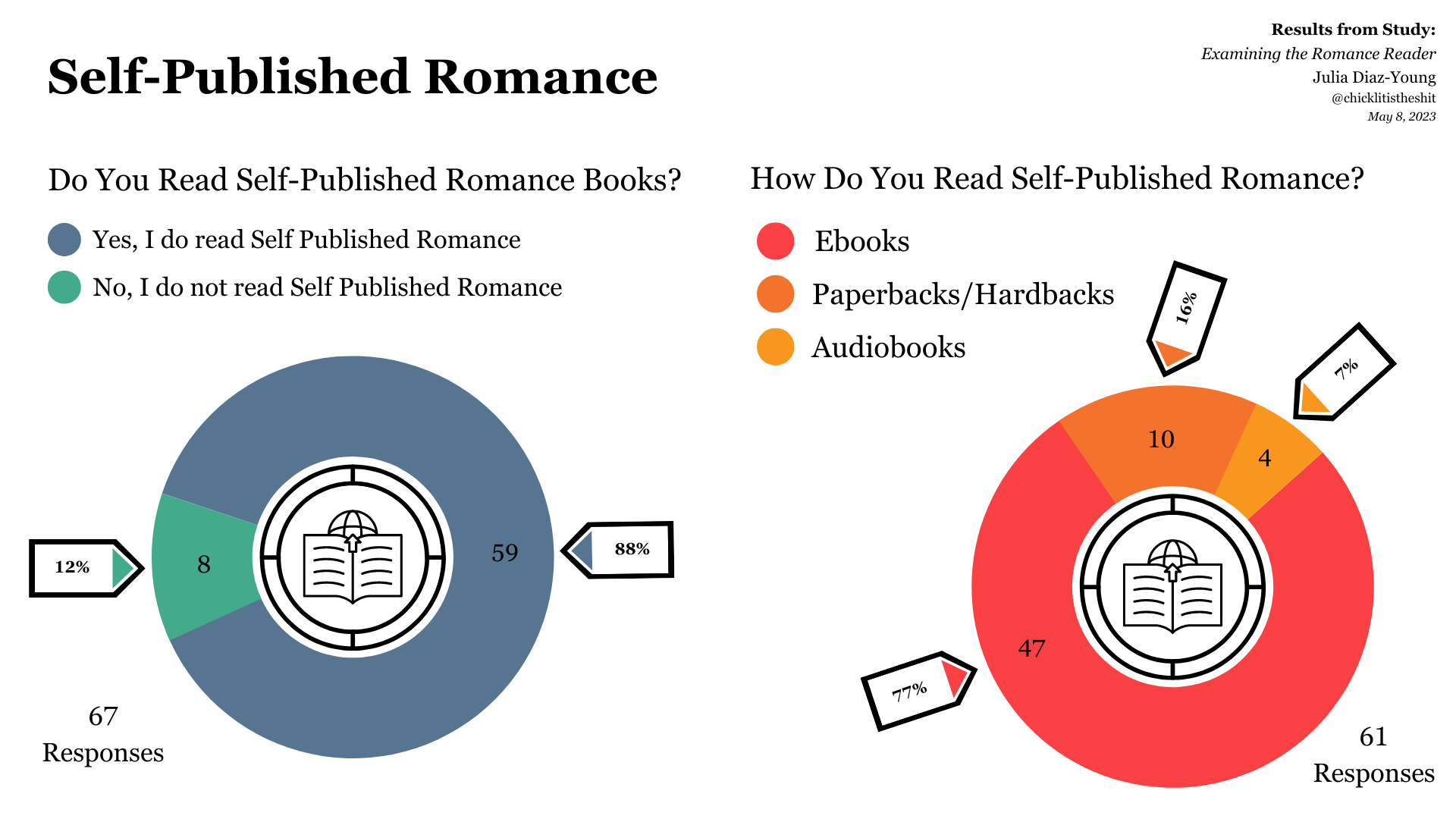Self Publishing
Getting your book out is easier than ever–so let’s explore how Self-Publishing has impacted the romance genre.
Chart 31: Self-Published Romance Books
Main Insight: 88% of romance readers read self-published romance books & 77% read them via ebooks.
In my interview with DH, the creator behind @drops.everything.and.reads, we discussed the advantages of a new category we best described as “hybrid authors.”
Quote on Self-Publishing to Traditional Publishing
Some well-known authors fall into this category, including Alisha Rai and Kennedy Ryan, who began by self-publishing. Alisha Rai eventually gained the attention of Avon Books, a HarperCollins imprint, and was published by them. Kennedy Ryan, on the other hand, has more recent experience with both self- publishing and traditional publishing, alternating from title to title.
While some romance authors stick to either self-publishing or traditional publishing, others alternate between the two, taking advantage of their large followings to support their independent projects. This is especially beneficial since royalties for traditionally published authors can be quite low, usually ranging between 7 and 10 percent.
“Successful romance writers are now able to make decent money, and even strike gold, navigating between traditional and self-publishing and complementing traditional marketing with inventive social media and collaborative roll-outs with their well-networked peers.”³⁵
It really is the best of both worlds. And since this genre’s readers are quite open to reading self-published authors and are loyal to authors regardless of publisher, romance authors have greater flexibility on their publishing paths.
Citation for this Section
Source 35:
Kjellberg, A. (2022, September 12). How Amazon turned everyone into a romance writer (and created an antitrust headache). Observer. Retrieved May 6, 2023.


